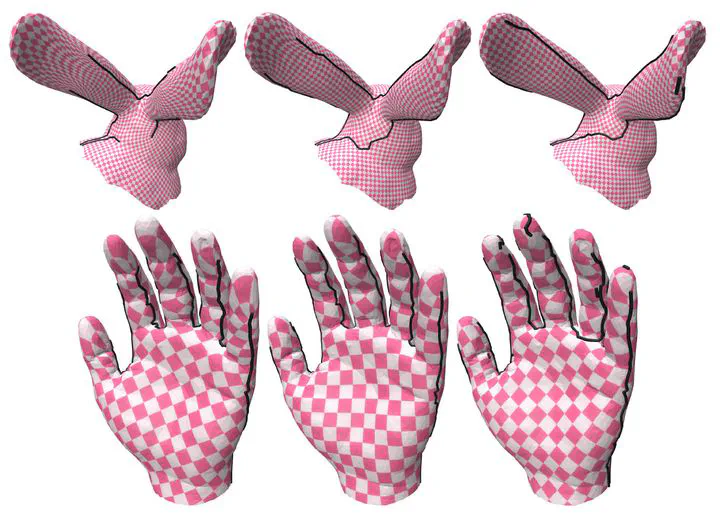Joint optimization of distortion and cut location for mesh parameterization using an Ambrosio-Tortorelli functional
Apr 16, 2023·,, ·
0 min read
·
0 min read
Colin Weill-Duflos
David Coeurjolly
Fernando De Goes
Jacques-Olivier Lachaud

Abstract
UV mapping is a classical problem in computer graphics aiming at computing a planar parameterization of the input mesh with the lowest possible distortion while minimizing the seams length. Recent works propose optimization methods for solving these two joint problems at the same time with variational models, but they tend to be slower than other cutting methods. We present a new variational approach for this problem inspired by the Ambrosio-Tortorelli functional, which is easier to optimize than already existing methods. This functional has widely been used in image and geometry processing for anisotropic denoising and segmentation applications. The key feature of this functional is to model both regions where smoothing is applied, and the loci of discontinuities corresponding to the cuts. Our approach relies on this principle to model both the low distortion objective of the UV map, and the minimization of the seams length (sequences of mesh edges). Our method significantly reduces the distortion in a faster way than state-of-the art methods, with comparable seam quality. We also demonstrate the versatility of the approach when external constraints on the parameterization is provided (packing constraints, seam visibility).
Type
Publication
Computer Aided Geometric Design, Proc. International Conference on Geometric Modeling and Processing (GMP 2023), Genoa, Italy. 102231, 2023.
Mesh Parameterization
UV Mapping
Variational Model
Ambrosio-Tortorelli Functional
Joint Distortion and Cut
Discrete Calculus
Authors
Professor of Computer Science
My research interests include digital geometry, geometry processing, image analysis, variational models and discrete calculus.